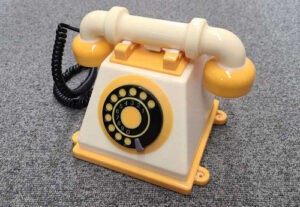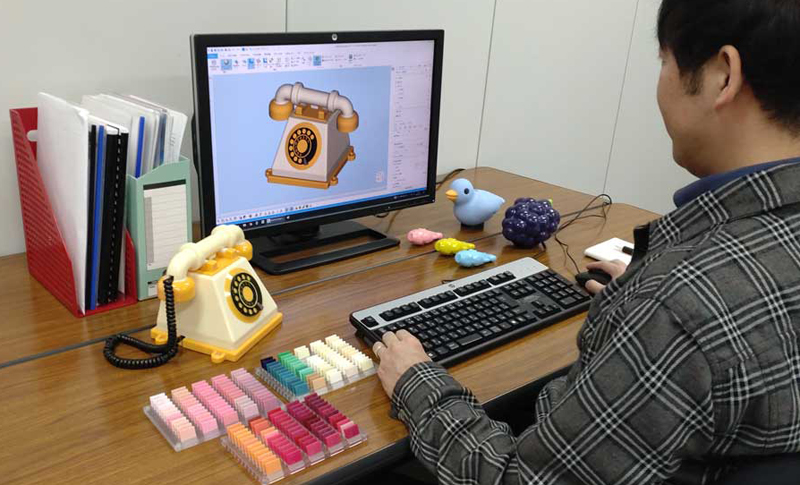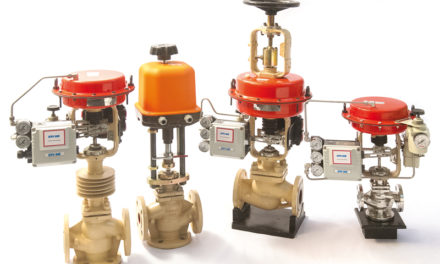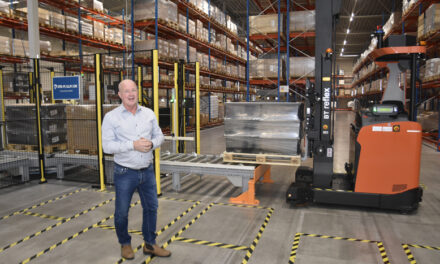Epoch Co., Ltd. is a Japanese toy manufacturer and long-time user of Materialise Magics. They’re enjoying the benefits of additive manufacturing (AM), using their 3D printer in a wide range of applications – from product development and concept models to scenic dioramas used for product photography.
Epoch’s Sylvanian Families collection, consisting of dollhouses and dolls, is the company’s flagship product and is known worldwide. These collectible pieces feature delicate, meticulous designs and warm, inviting colors.
Epoch has been using monochrome 3D printers and Magics to create prototypes and commercial products since 2013, mainly for their Sylvanian Families line. 3D printing has enabled them to reduce time-to-market and lead times – from prototype to production. The company now owns two Stratasys full-color 3D printers and one SLA machine based on their continued success. They’ve also expanded their AM capabilities by investing in new equipment, installing a dedicated 3DP room in a completely new facility.
Epoch utilizes 3D printing not only for prototypes but also for exhibits, diorama bases, blister package prototypes, food samples, and more. And over the past four years, they’ve expanded their scope. Now, Epoch’s productivity is higher than ever, with their 3D printers operating at more than double the rate than before – from 4,000 hours to 8,700 hours per year – all thanks to Magics.
Filling the world with color: Magics reduces the time for data fixes
The team was motivated to introduce a full-color printer because they needed to reproduce the nuanced color gamut required to develop their Sylvanian products, a unique selling point for Epoch. Previously, after printing with a monochrome 3D printer, members of the technical team had to mix and match the colors used for painting the models. This  brought many issues, such as difficulty mixing the colors and the inability to reproduce previous shades and hues correctly. Production was generally a time-consuming process. However, Epoch was among the first in the toy industry to introduce full-color printers to their operation (an innovation just hitting the market at the time) to solve these internal issues.
brought many issues, such as difficulty mixing the colors and the inability to reproduce previous shades and hues correctly. Production was generally a time-consuming process. However, Epoch was among the first in the toy industry to introduce full-color printers to their operation (an innovation just hitting the market at the time) to solve these internal issues.
Mr. Koichi Nishino, Manager of the Sylvanian Families Department, R&D Division, Engineering Section, told us how effective 3D printing is for their business.
– We were already accustomed to running Magics for many years. We’ve used the software as part of our operation at the Tokyo Metropolitan Industrial Technology Research Institute (TIRI) since 2006. Introducing Magics at the same time as our first 3D printer was a smooth startup for us, says Mr. Nishino.
Epoch uses an outsourcing company for the CAD process. Once they receive the CAD data, they convert the file to STL format for 3D printing before removing the support structures and fulfilling post-processing requirements. In the past, Epoch faced the problem that the machine was unable to read the data due to data errors. Magics rectified this problem.
– By using Materialise Magics, we could easily convert the data from the external source to STL. Magics also helped us easily identify and fix errors and 3D print quickly, even when we were in a great hurry. We save a lot of time with Magics, he says.
From mono to multi: Magics preserves color information and allows Epoch to expand to the great outdoors
Usually, color information is lost when converting the data to STL; however, this is not the case with Magics. Upgrading their software version also enabled Epoch to work with 3D CAD in 3MF format, allowing them to fix any data while retaining key parameters such as the file’s color information. Such versatility is a game-changer for the team. Outsourcing the product may affect the subtle shades, ambiance, and general quality synonymous with the Sylvanian Families’ brand. Yet, using Magics ensured that their team members could easily perform these quality checks fully, as they understood the features and the fine detail their customers expect.
While color 3D printing is quite a specialized application, some advantages of using dedicated 3D printing tools are efficiency and design. This enables Epoch to express its products’ distinct and charming features exactly as the company envisaged. For example, the Sylvania Park, which opened in July 2018, recreates the world of Sylvania and draws  on the themes of nature, family, and love with a permeant, 3D-printed exhibit. Normally, it takes around half a day to edit any outsourced data. But now, the team can carry out every part of their unique design process inhouse. Keeping their expertise on-site makes the build preparation for new models ready faster (in about 10 minutes) – significantly speeding up the process.
on the themes of nature, family, and love with a permeant, 3D-printed exhibit. Normally, it takes around half a day to edit any outsourced data. But now, the team can carry out every part of their unique design process inhouse. Keeping their expertise on-site makes the build preparation for new models ready faster (in about 10 minutes) – significantly speeding up the process.
It’s a kind of magic —creating enchanting designs for whatever is needed
– The compatibility with 3D CAD and its relevance towards our business has never been greater, says Mr. Nishino. One of the most useful functions for complex shapes with a lot of surface texture is the Shrinkwrap feature, which has evolved. The surface finish is so much nicer now, he says.
– Magics reminds me of air; it’s essential and so natural that we must have it. And without it, we will definitely face problems. I think Magics is indispensable to our 3D printing operation, says Mr. Nishino. As a long-time user, it will be interesting to see how else Epoch will utilize the software and 3D printing in the future. However, until then, Mr. Nishino and Epoch will continue to using this tool to bring their unique and imaginative creations to life.
Derek Welbeck, Foto: Credit: Epoch.







